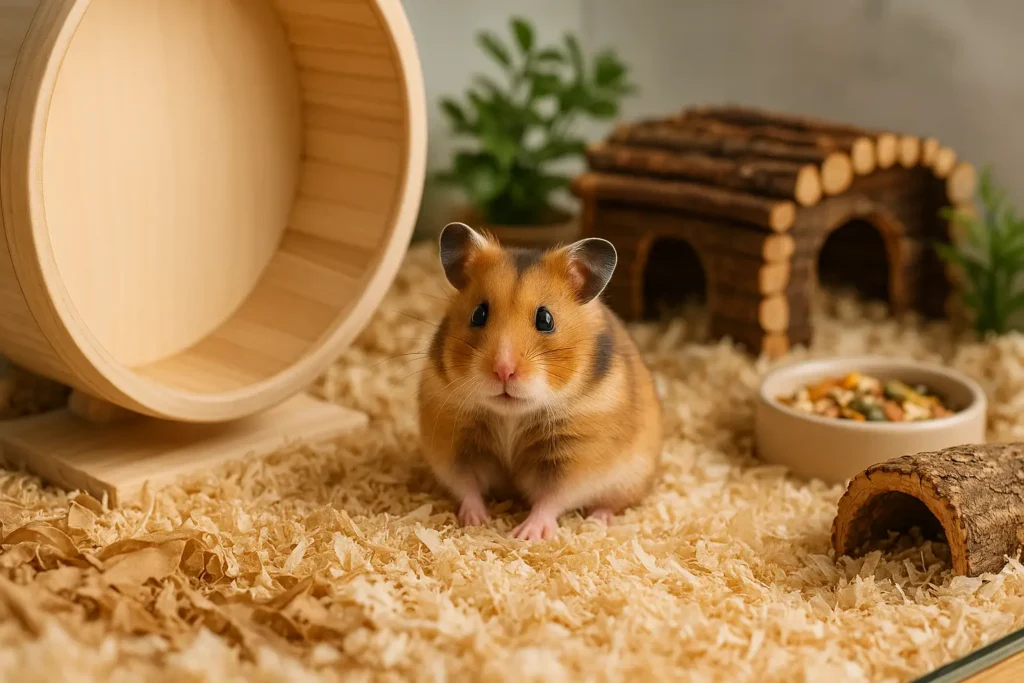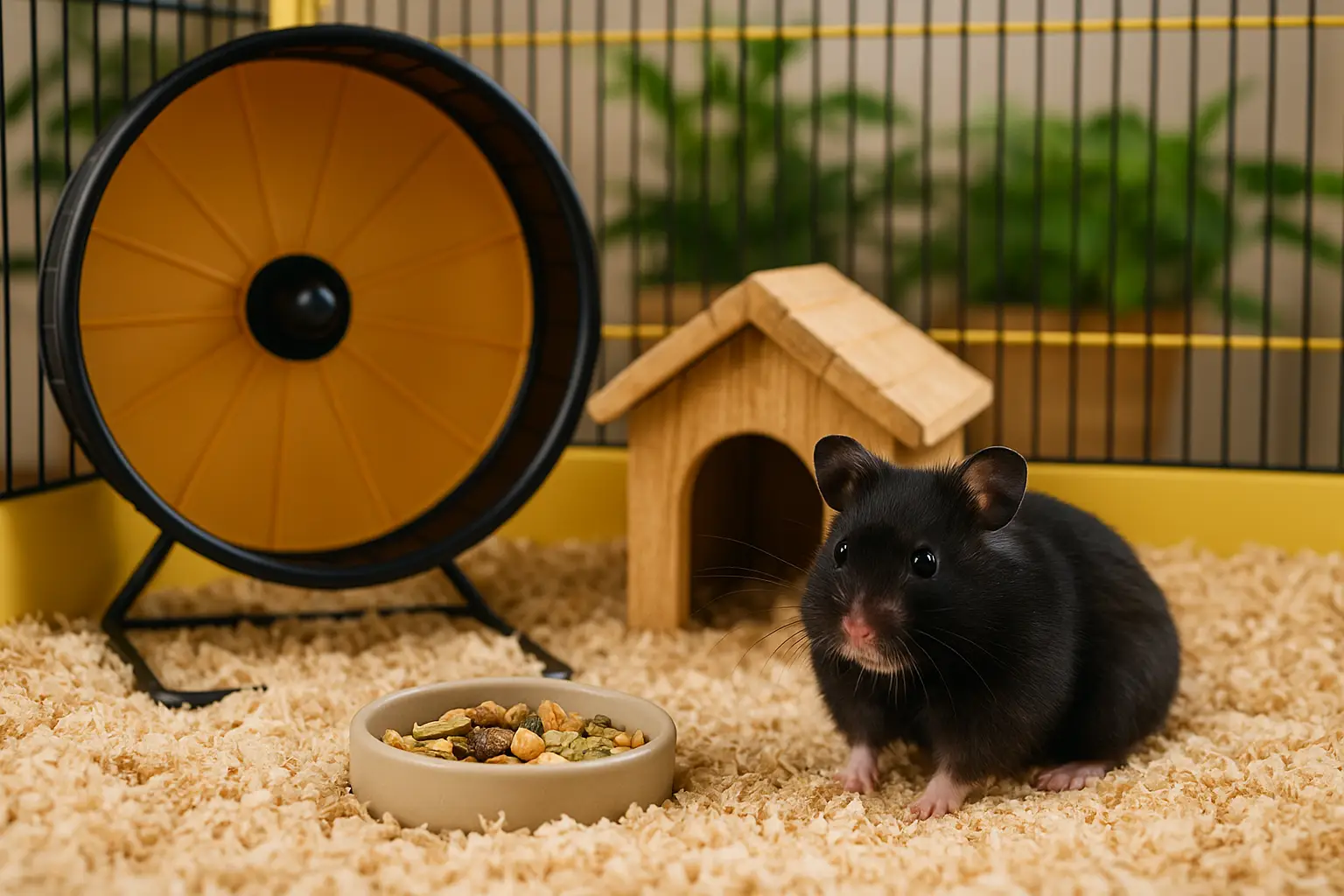How to Take Care of a Hamster: The Ultimate Guide
Taking care of a hamster is a fun and rewarding experience — but it comes with real responsibilities. These adorable, curious little creatures might be small, but their needs are complex. If you’re considering adopting a hamster or already have one at home, this ultimate guide will walk you through everything you need to know to ensure your furry friend lives a long, healthy, and happy life.
Whether you’re a complete beginner or someone looking to improve your hamster care routine
- Choosing the right hamster
- Cage and habitat setup
- Food and diet
- Taming and bonding
- Daily care and enrichment
- Health and warning signs
- Common mistakes to avoid
Let’s dive into the world of hamster care! 🐾✨

1. Choosing the Right Hamster 🐹🔍
Before bringing a hamster home, it’s important to understand that not all hamsters are the same. There are several species, and each has unique traits that affect their care.
🐾 Common Pet Hamster Species:
- Syrian Hamsters (Golden or Teddy Bear):
- Size: Largest species
- Personality: Solitary, calm, easy to tame
- Best for: First-time owners
- Dwarf Hamsters (Campbell’s, Winter White, Roborovski):
- Size: Small and quick
- Personality: Active, may live in pairs if introduced young
- Best for: Experienced owners
- Chinese Hamsters:
- Size: Long and slender
- Personality: Gentle but shy
- Best for: Quiet homes
💡 Important: Syrian hamsters must live alone. Dwarf hamsters may tolerate companionship but often still fight — so it’s safer to house one hamster per cage.
2. Setting Up the Perfect Hamster Habitat 🏠🪴
Your hamster’s cage isn’t just a container — it’s their entire world. Getting the setup right from the start makes a huge difference in their quality of life.
✅ Ideal Cage Requirements:
- Minimum floor space: 80×50 cm (31×20 inches)
- Height: Enough for a 20–28 cm wheel and enrichment
- Type: Glass tank, large wired cage with deep base, or DIY bin cage
- Bar spacing: Less than 1 cm to prevent escape
🛏️ Bedding:
- Use paper-based or aspen bedding
- Provide at least 20 cm (8 inches) of bedding depth for burrowing
- Avoid cedar, pine, and scented bedding
🧱 Cage Accessories:
- Solid-surface exercise wheel (20+ cm for dwarfs, 28+ cm for Syrians)
- Hideouts (wooden, cardboard, or ceramic)
- Chew toys
- Food dish and water bottle
- Platforms, tunnels, and ramps
🧼 Cleaning Schedule:
- Daily: Remove soiled bedding, refill water
- Weekly: Partial bedding change and wipe-down
- Monthly: Full cage clean with pet-safe disinfectant
3. Feeding Your Hamster the Right Way 🥦🍎
Hamsters are omnivores and thrive on a balanced diet that includes dry food, fresh vegetables, and the occasional treat.
🥣 Main Diet:
- High-quality pellets or seed mix (without added sugars or dyes)
- Daily portion: 1–2 tablespoons per day
- Choose foods formulated specifically for hamsters
🥕 Safe Vegetables (small amounts, 2–3x per week):
- Carrot
- Cucumber
- Broccoli
- Spinach
- Zucchini
🍎 Safe Fruits (once a week):
- Apple (no seeds)
- Banana
- Strawberry
- Blueberry
🚫 Foods to Avoid:
- Citrus fruits
- Chocolate
- Garlic, onion
- Junk food
- Spicy, salty, or processed foods
💧 Water:
- Fresh, clean water should be available at all times
- Use a water bottle or a heavy ceramic bowl
- Check daily for clogs or spills
4. Taming and Bonding With Your Hamster 🤲💕
Building a trusting relationship takes time — but it’s one of the most rewarding parts of hamster ownership.
Step-by-Step Taming Process:
- Let them settle (2–5 days): No handling, just observe
- Introduce your scent: Place your hand inside the cage, let them sniff
- Offer treats by hand: Use sunflower seeds or small snacks
- Begin gentle scooping: Support their body with two hands
- Handle in a safe area: Use a playpen or sit on the floor
📝 Keep sessions short and positive. Avoid forcing interaction. Be patient — each hamster is different!
5. Daily Hamster Care Checklist 📋🐾
Taking care of a hamster doesn’t take hours, but consistency matters.
Daily Tasks:
- Feed fresh food and check water
- Spot clean wet bedding
- Observe behavior and energy level
- Interact (talk, feed treats, supervised play)
Weekly Tasks:
- Partial bedding change
- Clean accessories and toys
- Trim nails (if needed, and only with guidance)
Monthly Tasks:
- Full cage cleaning
- Rotate toys for enrichment
- Health check (weight, teeth, nails, fur)
6. Enrichment and Toys 🧩🎡
A bored hamster is an unhappy hamster. Mental stimulation keeps them active, curious, and emotionally healthy.
Enrichment Ideas:
- Puzzle feeders
- Chew toys made of wood or safe materials
- Tunnels (paper towel tubes, commercial tubes)
- Dig boxes (sand, hay, shredded paper)
- Scatter feeding (hide pellets in bedding)
✅ Wheel Tips:
- Must have a solid surface
- Proper size prevents spinal issues
- Replace noisy wheels with silent spinners or ball-bearing wheels
7. Understanding Hamster Behavior 🔍🧠
Knowing what’s normal helps you detect when something’s wrong.
💤 Normal Behaviors:
- Sleeping during the day
- Active at night
- Chewing and burrowing
- Storing food
- Grooming often
🚨 Signs Something’s Wrong:
- Lethargy during active hours
- Diarrhea or “wet tail”
- Bald patches or sores
- Labored breathing
- Unusual aggression or fear
If you notice any of these, consult a small animal vet immediately.
8. Common Health Issues 🏥🐹
Hamsters hide symptoms — so by the time signs are visible, the issue may be serious.
Most common illnesses:
- Wet tail: Bacterial infection causing diarrhea, dehydration
- Mites or skin infections: Causes itching, fur loss
- Overgrown teeth: Can prevent eating
- Obesity: Leads to heart, liver, and joint problems
- Respiratory infections: Wheezing, sneezing
🩺 Always have the contact info of a vet experienced with rodents.
9. Hamster Lifespan and Aging 🕰️💞
Hamsters live 2 to 3 years on average. With excellent care, some reach 3.5 years.
Signs of aging:
- Slower movement
- Greying fur
- More sleep, less activity
- May need easier access to food/water
Treat your aging hamster with extra gentleness. They may not play as much, but they still need love and care.
10. Common Mistakes to Avoid 🚫⚠️
Even well-meaning owners can make harmful errors. Here are the biggest:
- Buying cages that are too small
- Using cotton/fluffy bedding
- Keeping multiple hamsters together
- Using wire wheels
- Feeding sugary or processed food
- Cleaning too often or too rarely
- Waking them during the day
- Leaving them alone without enrichment
Avoid these, and you’ll already be ahead of most hamster owners!
Final Thoughts: Tiny Pet, Big Heart 🐾💛
Hamsters may be small, but they bring enormous joy and personality into your home. They’re smart, clean, curious, and surprisingly affectionate — once they trust you.
By understanding their needs — from cage size to diet to enrichment — you’ll create a safe, happy world where your hamster can thrive.
They depend on you for everything. And when you care for them with love and knowledge, they repay you in the most beautiful way: with their trust.
Happy hamster parenting! 🐹🌟



Post Comment